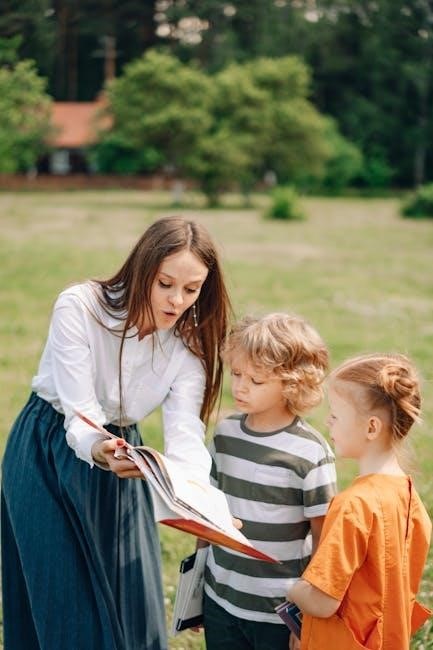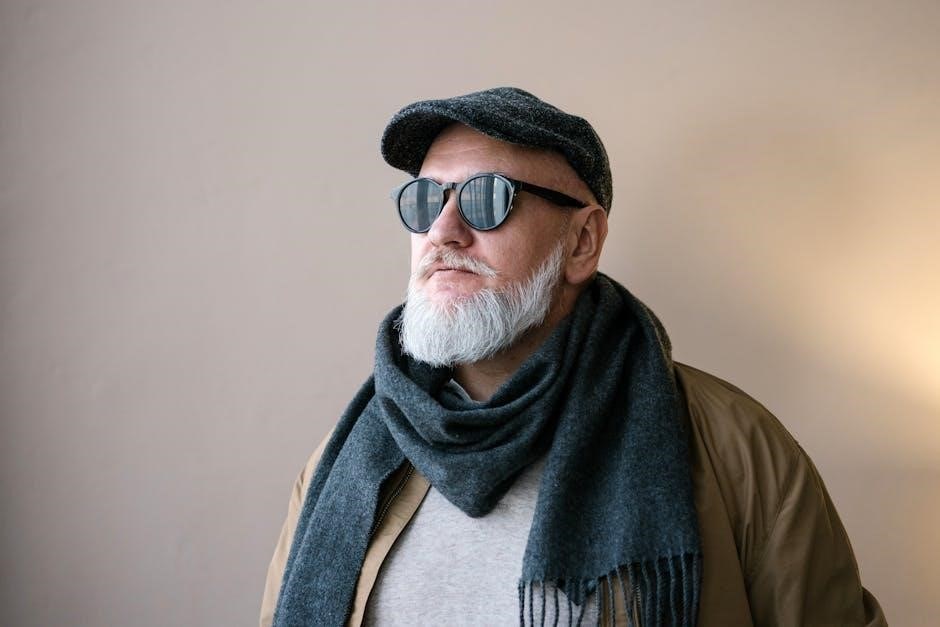The Camino de Santiago is a historic pilgrimage across Spain, offering a transformative journey through scenic routes like the Camino Francés, blending spirituality, culture, and adventure for centuries.
Overview of the Camino de Santiago
The Camino de Santiago is a network of pilgrimage routes leading to Santiago de Compostela in Spain, where the tomb of Saint James the Apostle is believed to lie. These paths, such as the iconic Camino Francés, Camino Portugués, and others, span thousands of kilometers across Europe, attracting pilgrims from around the world. The journey is not just a physical challenge but also a spiritual and cultural experience, offering a chance to connect with history, nature, and oneself. Pilgrims, or peregrinos, carry a Pilgrim’s Passport to document their progress, stamping it at churches and albergues along the way. The routes vary in length and difficulty, catering to different preferences, from short sections to the full 780 km of the Camino Francés. Whether walked for religious devotion, personal growth, or adventure, the Camino remains a timeless and transformative experience.
Historical Significance of the Camino
The Camino de Santiago holds profound historical significance as one of the most important Christian pilgrimages since the Middle Ages. Its origins trace back to the 9th century when the tomb of Saint James the Apostle was discovered in Santiago de Compostela, Spain. This revelation transformed the site into a sacred destination, attracting pilgrims from across Europe. Over the centuries, the Camino became a symbol of faith, resilience, and cultural exchange. Pilgrims traversed vast landscapes, establishing trade routes, sharing ideas, and leaving a lasting architectural and artistic legacy. The Camino Francés, in particular, was a major artery of medieval Europe, with cathedrals, monasteries, and hospitals built to support pilgrims. Today, the Camino is not only a religious journey but also a celebration of history, connecting modern pilgrims to centuries of tradition and devotion.
Cultural Importance of the Pilgrimage
The Camino de Santiago is a vibrant tapestry of culture, spirituality, and community, weaving together diverse traditions and inspiring countless artistic expressions. As a UNESCO World Heritage Site, it symbolizes the unity of humanity, drawing pilgrims from all walks of life. The pilgrimage has influenced art, music, and literature, with landmarks like the Cathedral of Santiago de Compostela standing as testaments to its enduring legacy. Local communities along the routes celebrate the Camino through festivals, cuisine, and hospitality, creating a rich cultural experience for pilgrims. The journey fosters connections, breaking down barriers and fostering mutual understanding. Beyond its spiritual significance, the Camino is a living celebration of history, culture, and the shared human experience, making it a cornerstone of European heritage and a source of inspiration worldwide.

Choosing the Right Route

The Camino de Santiago offers diverse routes across Spain, each with unique landscapes and challenges. Selecting the right path depends on your physical ability, time, and personal preferences, ensuring a meaningful journey.
Popular Routes: Camino Francés, Camino Portugués, and Others
The Camino Francés is the most popular route, stretching 780 kilometers from St-Jean-Pied-de-Port to Santiago de Compostela. Known for its well-marked trails and vibrant pilgrim community, it offers a mix of scenic countryside and historic towns. The Camino Portugués, spanning 610 kilometers, is another favored path, starting in Lisbon or Porto, with gentle terrain and rich cultural heritage. Other notable routes include the Camino del Norte, which hugs Spain’s northern coast, and the Camino Primitivo, a challenging yet rewarding trail through rugged landscapes. Each route offers unique experiences, from breathtaking views to spiritual encounters, allowing pilgrims to choose based on their preferences for scenery, difficulty, and cultural immersion. These paths have been trodden by millions, creating a global community united by the shared goal of reaching Santiago de Compostela;

Factors to Consider When Selecting a Route

Selecting the right Camino route depends on several factors, including physical ability, time availability, and personal preferences. Pilgrims should assess their fitness level, as routes vary in length and difficulty. The Camino Francés is ideal for first-timers, offering well-marked paths and ample amenities. For a quieter experience, the Camino del Norte or Camino Primitivo may appeal, though they feature more challenging terrain. Time constraints also play a role; shorter routes like the Camino Inglés can be completed in under two weeks. Additionally, consider the season, as peak times may mean busier trails and limited accommodation. Personal interests, such as historical sites or coastal views, should also guide the decision. Researching each route’s unique characteristics ensures a tailored and fulfilling experience, allowing pilgrims to align their journey with their goals and capabilities. This thoughtful selection enhances the overall pilgrimage experience, making it a memorable adventure.

Planning Your Pilgrimage
Effective planning is essential for a smooth Camino experience. Research the best time to walk, calculate the duration, and create a realistic budget covering accommodations, meals, and gear. Proper preparation ensures a fulfilling journey.
Best Time to Walk the Camino
The best time to walk the Camino de Santiago is during spring (April–June) and autumn (September–October), when temperatures are mild and rainfall is minimal. These seasons offer ideal walking conditions, with fewer crowds compared to the peak summer months. Pilgrims can enjoy the scenic beauty of the Spanish countryside without the extreme heat of summer or the cold of winter. Additionally, these periods provide a peaceful atmosphere, allowing for a more spiritual and reflective experience. However, some pilgrims prefer walking in winter for a quieter journey, while others embrace the vibrant energy of summer despite the crowds. Choosing the right season depends on personal preference and what one seeks from the pilgrimage. Proper planning and preparation are essential regardless of the chosen time to ensure a safe and enjoyable journey.
How Long Does It Take to Complete the Camino?
The duration to complete the Camino de Santiago varies depending on the route and individual pace. On average, walking the full Camino Francés, approximately 780 kilometers, takes about 30–35 days if walking around 20–25 kilometers daily. Cyclists can complete it faster, typically in 10–14 days. However, many pilgrims choose shorter sections, such as the final 100 kilometers to Santiago de Compostela, which takes about 5–7 days. The Camino Portugués, a popular alternative, is roughly 610 kilometers and can be completed in 25–30 days. Factors like physical fitness, rest days, and time spent exploring cultural sites also influence the total duration. Planning an itinerary that suits your lifestyle and goals ensures a fulfilling experience. Remember, the Camino is not a race but a journey of self-discovery and connection.
Budgeting for the Camino Journey
Budgeting for the Camino de Santiago is essential to ensure a stress-free pilgrimage. Average daily costs range from €30–€50, covering accommodation, meals, and basic expenses. Albergues (pilgrim hostels) are affordable, costing €5–€15 per night, while private hotels can range from €40–€70. Meals, especially at local restaurants offering pilgrim menus, are typically €10–€15. Transportation, such as flights and trains to and from Spain, can vary widely depending on your starting location. Budget at least €200–€300 for gear, including hiking boots, backpacks, and clothing. Additional expenses like snacks, souvenirs, and medical supplies should also be considered. Many pilgrims allocate €25–€35 per day for flexibility. Planning ahead and booking accommodations in advance can help reduce costs, ensuring your journey remains within budget while still being enriching and memorable.

Packing Essentials
Lightweight hiking boots, moisture-wicking socks, and layered clothing are must-haves. Include a sturdy backpack, water bottle, and pilgrim’s passport. Don’t forget trekking poles, sun protection, and basic first aid for comfort.
The Pilgrim’s Passport: What You Need to Know
The Pilgrim’s Passport (Credencial) is an essential document for Camino de Santiago pilgrims, serving as proof of their journey. Obtained through official sources or upon arrival in Spain, it must be stamped at designated locations like churches and albergues. Each stamp validates a day’s travel, ensuring authenticity for the final Compostela certificate. Keep it handy to avoid delays and store it safely, especially in wet conditions. This passport is a cherished keepsake, documenting your spiritual and physical journey across Spain. Don’t forget to collect stamps regularly to fully capture your pilgrimage experience.
Backpacking Tips for the Camino
Choosing the right backpack is crucial for a comfortable Camino de Santiago journey. Opt for a lightweight, durable backpack with padded straps and a rain cover. Pack lightly, prioritizing essentials like extra clothing, a first-aid kit, and navigation tools. Consider a 30-40L capacity to avoid overloading. Organize your gear using compartments or packing cubes for easy access. Bring a reusable water bottle and a quick-dry towel to save space and reduce waste. Wear your heaviest items, like hiking boots, on travel days to lighten your pack. Keep valuables secure and easily accessible. Lastly, leave some extra space for souvenirs and items collected along the way. A well-organized backpack ensures a more enjoyable and stress-free pilgrimage.
Footwear and Hiking Gear Recommendations
Choosing the right footwear and hiking gear is essential for a successful Camino de Santiago pilgrimage. Opt for sturdy, waterproof hiking boots with good ankle support and cushioning to handle the varied terrain. Ensure boots are well-broken-in before starting your journey to prevent blisters. Comfortable hiking socks made from moisture-wicking materials are also vital—consider bringing multiple pairs. Additional gear should include trekking poles for stability on uneven paths and a lightweight rain jacket for unpredictable weather. A sturdy backpack with padded straps will help distribute the weight evenly. Don’t forget essentials like a water bottle, map, and basic first-aid kit. Proper footwear and gear can make a significant difference in your comfort and overall experience on the Camino.
Clothing for Different Seasons and Weather
Choosing the right clothing for the Camino de Santiago is crucial, as the weather can vary significantly depending on the season. For spring and autumn, layering is key—opt for breathable base layers, a fleece, and a waterproof jacket. Summer requires lightweight, moisture-wicking fabrics to keep cool, while winter demands thermals, insulated layers, and sturdy waterproof gear. Always include rainwear, as showers can occur year-round. Comfortable hiking socks are essential, and consider quick-drying pants and shirts for versatility. Don’t forget a hat and gloves for colder months. Pack clothes that can be easily mixed and matched to reduce luggage weight. Check the weather forecast before your trip to ensure you’re prepared for any conditions. By selecting practical, seasonal clothing, you’ll enhance your comfort and enjoyment on the pilgrimage.
Accessories for a Comfortable Journey
Equipping yourself with the right accessories can greatly enhance your Camino de Santiago experience. A sturdy, lightweight backpack with padded straps is essential for carrying daily essentials. Trekking poles can help reduce fatigue and provide balance on uneven terrain. Foot care is vital, so pack blister pads, moleskin, and a foot roller for relief. A reusable water bottle or hydration bladder ensures you stay hydrated throughout the day. Don’t forget a hat, sunglasses, and sunscreen for sun protection, as well as insect repellent for bug-prone areas. A universal power adapter and portable charger are must-haves for keeping devices powered. Consider a lightweight rain poncho or jacket for unexpected showers. Lastly, a basic first-aid kit with band-aids, antiseptic wipes, and pain relievers is indispensable for minor injuries. These practical accessories will help you stay comfortable and prepared for the challenges of the pilgrimage.

Training and Preparation
A well-structured training plan is essential for the Camino de Santiago. Build stamina with regular walks, strengthen core muscles, and mentally prepare for the journey. Proper gear and physical conditioning ensure a fulfilling experience.
Physical Conditioning for the Camino

Physical conditioning is crucial for a successful Camino journey. Start training months in advance with regular cardio exercises like walking, cycling, or swimming to build endurance. Incorporate strength training, such as squats and lunges, to strengthen leg muscles. Gradually increase your walking distance to simulate the Camino’s demands, aiming for 20-25 km per day. Wear your hiking boots during training to break them in and prevent blisters. Pay attention to core stability exercises to improve balance and posture. Pilgrims should also practice walking with a loaded backpack to build stamina. Rest days are equally important to allow your body to recover. A well-structured training plan ensures you’re physically prepared for the challenges of the Camino, making the experience more enjoyable and reducing the risk of injury. Consistency is key to building the resilience needed for this life-changing pilgrimage.
Mental and Spiritual Preparation
Mental and spiritual preparation are essential for a fulfilling Camino experience. Begin by setting clear intentions, whether spiritual, personal, or reflective. Cultivate an open-minded and resilient mindset to embrace the journey’s challenges and beauty. Practice mindfulness or meditation to calm your thoughts and connect with the present moment. Reflecting on your motivations and goals can deepen your spiritual connection to the pilgrimage. Journaling is a powerful tool to document your thoughts and emotions, helping you process the journey. Embrace the simplicity of life on the Camino and let go of distractions. Building mental resilience through positive affirmations and gratitude practices can help you stay grounded. Engaging with fellow pilgrims and sharing stories fosters a sense of community and spiritual enrichment. This inner preparation will enhance your ability to fully immerse in the pilgrimage, making it a transformative journey of self-discovery and renewal.
Navigating the Camino: Maps, Apps, and Signs
Navigating the Camino de Santiago is made easier with the right tools. Carry a detailed map to visualize the route and plan daily stages. Apps like Wise Pilgrim and Camino Navigator provide GPS tracking, real-time information, and offline access, ensuring you stay on track. Traditional yellow arrows and scallop shell markers are iconic guides along the way, though modern technology complements these signs. Familiarize yourself with these tools to enhance your journey. Many pilgrims rely on a combination of maps, apps, and signs for seamless navigation.

Accommodation Options
The Camino offers diverse lodging choices, from traditional albergues (pilgrim hostels) to hotels and camping sites, catering to all preferences and budgets for a comfortable journey.
Albergues: Traditional Pilgrim Hostels
Albergues are the heart of the Camino experience, offering simple, affordable lodging for pilgrims. These hostels provide dormitory-style accommodations, shared facilities, and a welcoming atmosphere for those carrying a Pilgrim’s Passport. Many are run by local communities or religious organizations, adding a unique cultural touch. Some albergues are donation-based, while others charge a small fee, ensuring accessibility for all. They often include basic amenities like showers, laundry, and kitchenettes, allowing pilgrims to rest and recharge. The camaraderie among travelers in these shared spaces fosters a sense of community, making albergues more than just a place to sleep—they’re a hub for shared stories and friendships. For those seeking authenticity, albergues are the essence of the Camino spirit.
Hotels and Private Accommodation
For pilgrims seeking more comfort and privacy, hotels and private accommodations offer a cozy retreat along the Camino de Santiago. These options range from charming boutique hotels to family-run guesthouses, providing en-suite bathrooms, Wi-Fi, and other amenities. Many are located in historic buildings, blending modern comfort with traditional Spanish flair. Private rooms often include breakfast, making them a convenient choice for those who prefer a more relaxed start to their day. Booking in advance is recommended, especially during peak seasons, as demand for these accommodations can be high. While they are pricier than albergues, hotels and private stays offer a peaceful atmosphere, ideal for rest and reflection. For those seeking a balance between comfort and authenticity, these options provide a delightful way to experience the Camino.
Camping Along the Camino
Camping along the Camino de Santiago offers a unique way to connect with nature and immerse yourself in the pilgrimage experience. While traditional albergues are the most common choice, camping provides an alternative for those seeking solitude or a closer bond with the outdoors. Many towns along the routes have designated campsites, often equipped with basic amenities like showers and picnic areas. Pilgrims can pitch their tents or use campervans, though availability varies by region. Camping is a budget-friendly option, especially for those traveling during off-peak seasons. However, carrying camping gear adds weight to your backpack, so it’s essential to pack lightweight equipment. Additionally, weather conditions, such as rain or extreme heat, can make camping challenging. Despite these considerations, camping remains a popular choice for adventurous pilgrims looking to deepen their connection with the natural beauty of Spain.
